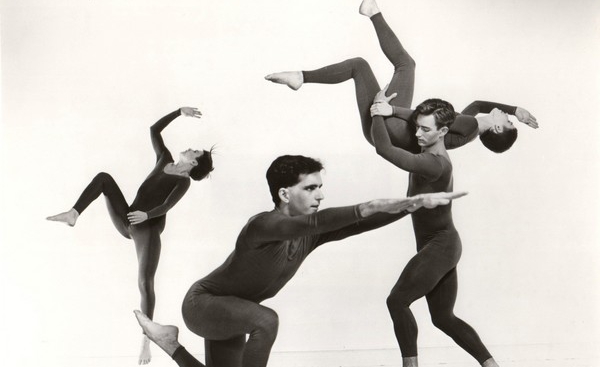“I received the initial email, notifying that I’d been nominated for this protégé and mentor arts initiative – and I didn’t know anything about it at that point of time – I thought that maybe it was spam to begin with. I was coincidentally on tour in New York at that time with Lucy Geurin and I asked her about it and she said, “Oh, yeah, I’ve heard about this’ and mentioned a few other people she knew who’d been nominated, not realising at the time that she’d been the person who’d nominated me. I only found that out later, because they keep the process anonymous until it was all finalised.”
Suffice to say, Serle made the grade and was mentored by Brown for a year from 2010 until 2011 and it’s an understatement to say that working with her was a big deal. “I hadn’t ever anticipated that something like that would happen – I never even thought I’d meet Trisha Brown let alone be part of the company and get to live in New York for 12 months.”
Serle had studied dance at VCA and knew damn well that many of the techniques he was taught had a direct lineage back to Brown. Serle puts it neatly in context. “Trisha was pioneering back in the ’60s and ’70s in what’s described as ‘pure movement’,” he explains. “It was about movements that are not expressive in an emotional way – it was much more about the mechanics of the body and sometimes more pedestrian movements. It was the weight and momentum of the body and its natural mechanics that Trisha was really investigating. She was developing these techniques alongside choreographers in and around New York at that time. It’s been passed down, as things do, through different dancers and different choreographers, it all just flowed down and a lot of those techniques are taught today.”
Serle credits the mentorship with quite literally opening up a whole world to him. “It opened up a huge, worldwide network of artists and that was something that was really beneficial to me in branching out further, including into other artists’ work – not just in dance. I recently went to do a residency in Beirut – I struck up a friendship with the protégé in theatre in my Rolex Mentor cycle and she invited me to the company. It’s opened up a whole other network of people and it’s been great because it’s developed this relationship with the Trisha Brown Dance Company that’s been continuing.”
Indeed it has – Serle’s going to perform in Melbourne Festival with the Trisha Brown Dance Company in a piece called Rogues, which he created with Brown, Carolyn Lucas (one the Company’s Associate Artistic Directors)andNeal Beasley (another dancer). While it works as a stand alone piece, Rogues has now become part of the larger work Pure Movement.
When Serle was in New York earlier this year he was asked if he’d like to perform Rogues withthe company when it comes to Melbourne and his answer was an emphatic yes. Serle’s also going to do some introduction and pre-show talks, which is a sterling way to get some insight into the works if you’re not familiar with them.
Brown’s repertoire is huge – spanning over 100 dance works since 1961. It includes stuff that’ll grip you even if you’re not that into dance ordinarily. Take the Early Works, which include a piece called Walking On The Wall. It involves all of the dancers being suspended from the ceiling and hanging perpendicular to a wall. It’s mesmerising and it looks like it’d be a hoot to perform. “It was really fun, I’m so glad I was able to perform that,” Serle reflects. “We re-mounted that at the Whitney, which is where it was first performed. You’re in a harness and literally walking along the wall horizontally. It was a slightly nerve wracking the first time getting into the harness, but it’s actually very secure. It’s not often you get the opportunity to walk on a wall. It’s a great piece and something like that stands the test of time – it’s still fascinating, even when you see so many aerial acts and circus, but the simplicity of just watching what looks like pedestrians just walking across a wall is still fascinating to watch.”
Interestingly, in order for the Early Works to be at their most effective, they don’t just require a bit of daredevil, they also require imperfection. “They were quite experimental,” explains Serle. “There were certain risks involved and lot to do with weight, gravity and counterbalance. A lot of the pieces used equipment – long sticks, long pieces of wood that were balanced or used in various ways. For a viewer might seem simple, but completing the tasks is quite difficult, so sometimes when things go wrong it better demonstrates the difficulty with these tasks as set out.
“As a performer you always want to complete a task or not make a mistake, but sometimes if you’re doing a piece called Leaning Duets and somebody tips the weight too far to one side and one person falls to the ground, it can demonstrate more clearly what’s happening in that work.”
BY MEG CRAWFORD

